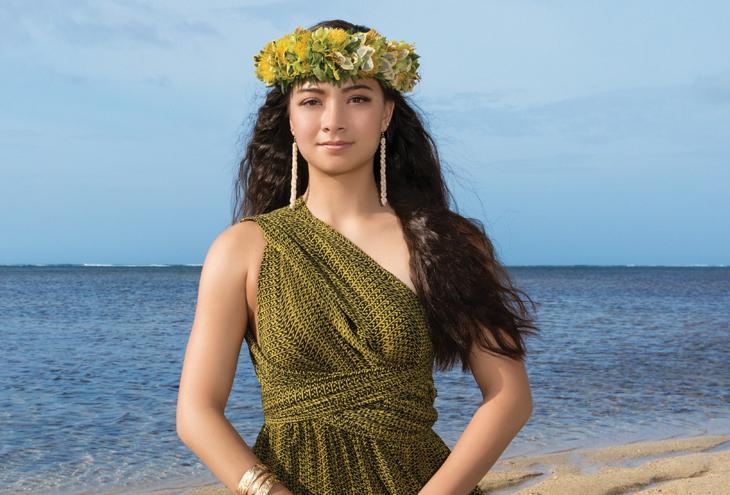Anuhea Parker may be still in high school, but she’s already an accomplished science student. A senior at Kamehameha Schools Kapˉ alama in Honolulu, Parker is a veteran of several presentations of her research, both in Hawaii and on the continent. Her poster presentation won second-place awards at the AISES National Conference in 2017 and 2018 and at the Hawaii State Science Fair in 2017. She will compete again at the state level this spring.
Parker’s National Conference presentation described her investigation of environmental factors that affect the growth of Halophila hawaiiana, a seagrass endemic to the Hawaiian and Midway Islands. She explained that the seagrass is important to both ecology and culture, as it’s part of the diet of the Hawaiian honu, or green turtle, and is under threat from development and algae blooms. “This was my second year attending the conference,” Parker says. “It is so inspiring to see Indigenous people thriving in the careers I aspire to have!”
A member of the National Honor Society, Parker participated in Kamehameha’s honors scientifi c research class for three years. And she’s won awards from Arizona State University’s Walton Sustainability Solutions Initiatives, Bausch + Lomb, the National Oceanic and Atmospheric Administration, and the Hawaii Botanical Society. She is also an enthusiastic athlete who especially enjoys playing water polo.
But none of these achievements would be possible without a fi rm grounding in family, community, and the Hawaiian culture — roots Parker has in abundance. She credits her “amazing” parents and family with instilling values she says she’s come to live by every day. She also credits their unfailing support and, she says, “cheering me on at my water polo games and congratulating me on my academic success.”

Parker, whose home overlooks Maunalua Bay in East Honolulu, celebrates her Native Hawaiian roots as well as her Chinese, Portuguese, German, English, and Irish heritage. “Maunalua has been my source of imagination and wonder throughout my life,” says Parker. “I have a very close connection to the 'aina ˉ (land) of my upbringing, which has greatly infl uenced the way I see the world.”
Her cultural ties include Hawaiian language and hula classes, and Parker is one of the few chosen student announcers in the Kamehameha Schools Song Contest, a nearly 100-year-old celebration of Hawaiian mele (songs) in keeping with the school’s tradition of grounding students in Hawaiian tradition while providing a top-notch private education.
Parker’s teachers also help her direct her energies and talent. “They and my parents pushed me to be my very best at everything, from hard-working athlete to diligent student to good person,” she explains. “This mind-set has helped me reach my goals.”
Her education at Kamehameha has benefi ted Parker in other ways. “My nine years at Kamehameha have given me the confi dence and ability to fi gure out what I want to do with my future,” she says. “And for that gift, I am forever indebted.”
Parker also has taken advantage of other opportunities to help set her future path. “Last summer, I attended the MIT Women’s Technology Program in mechanical engineering,” she says. “This program taught me the basis of engineering through hands-on experimentation and lectures, which opened me up to a whole new world of possibilities.”
Parker’s next move is to Stanford University, where she’ll most likely major in mechanical engineering — and, of course, make the most of Stanford’s offerings in hands-on research and internship opportunities. Then she plans to continue her quest for knowledge by pursuing an MBA. “I want to educate myself to gain a broader awareness of our world to use for the benefi t of my home and my people,” she says. “My ultimate career goal is to open my own engineering fi rm in Hawaii.”














